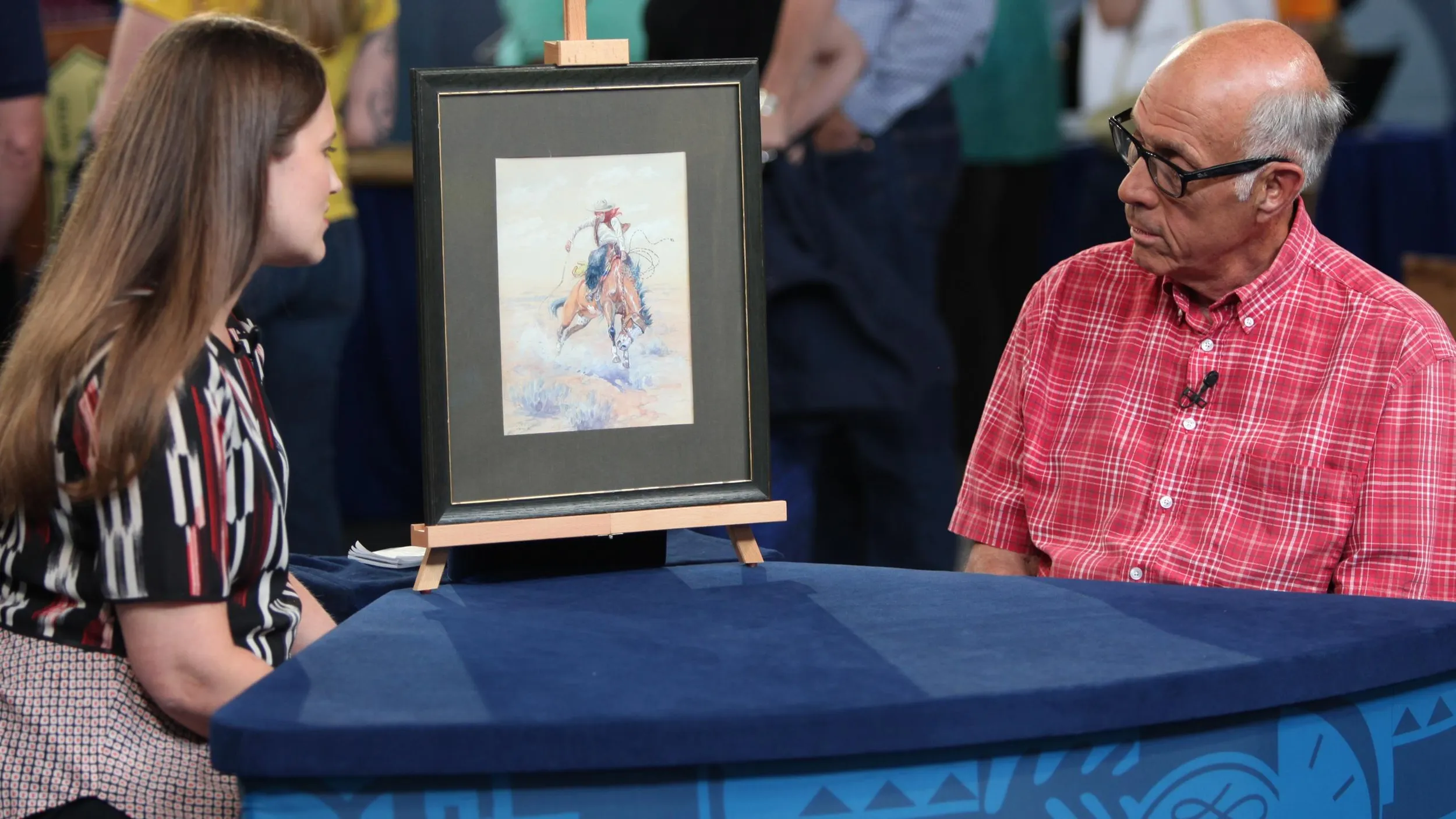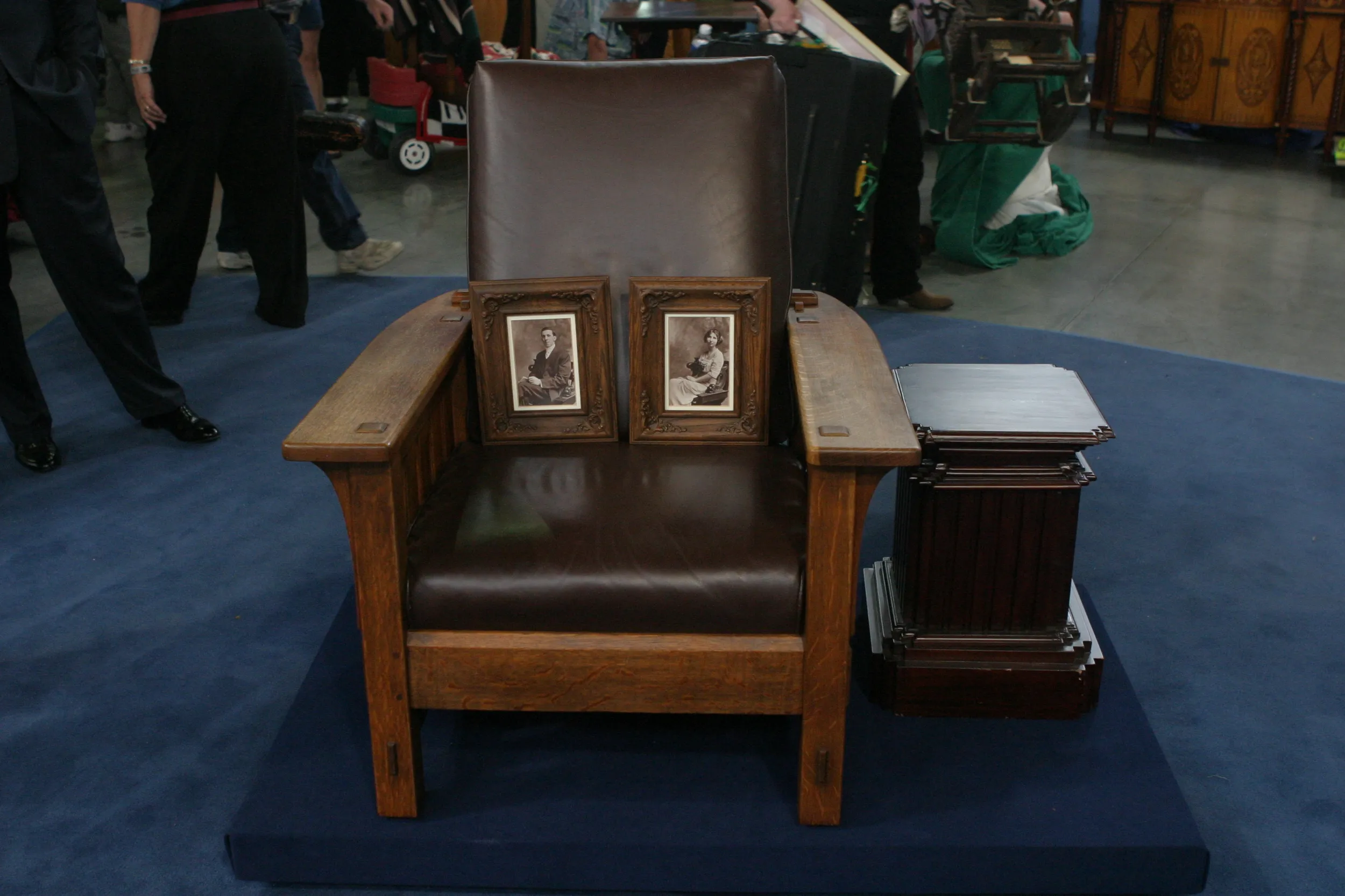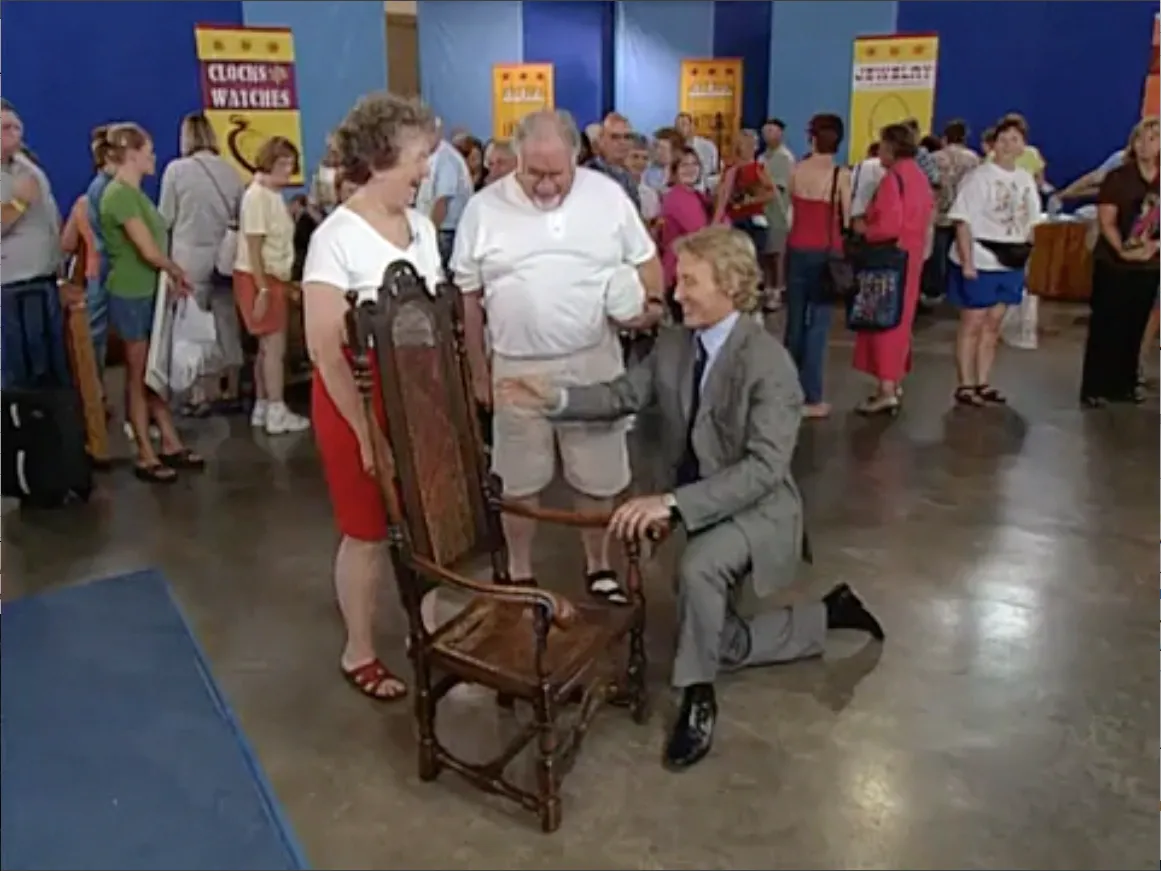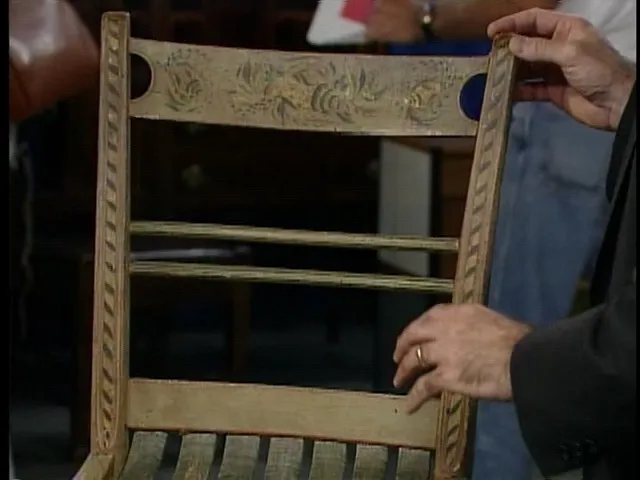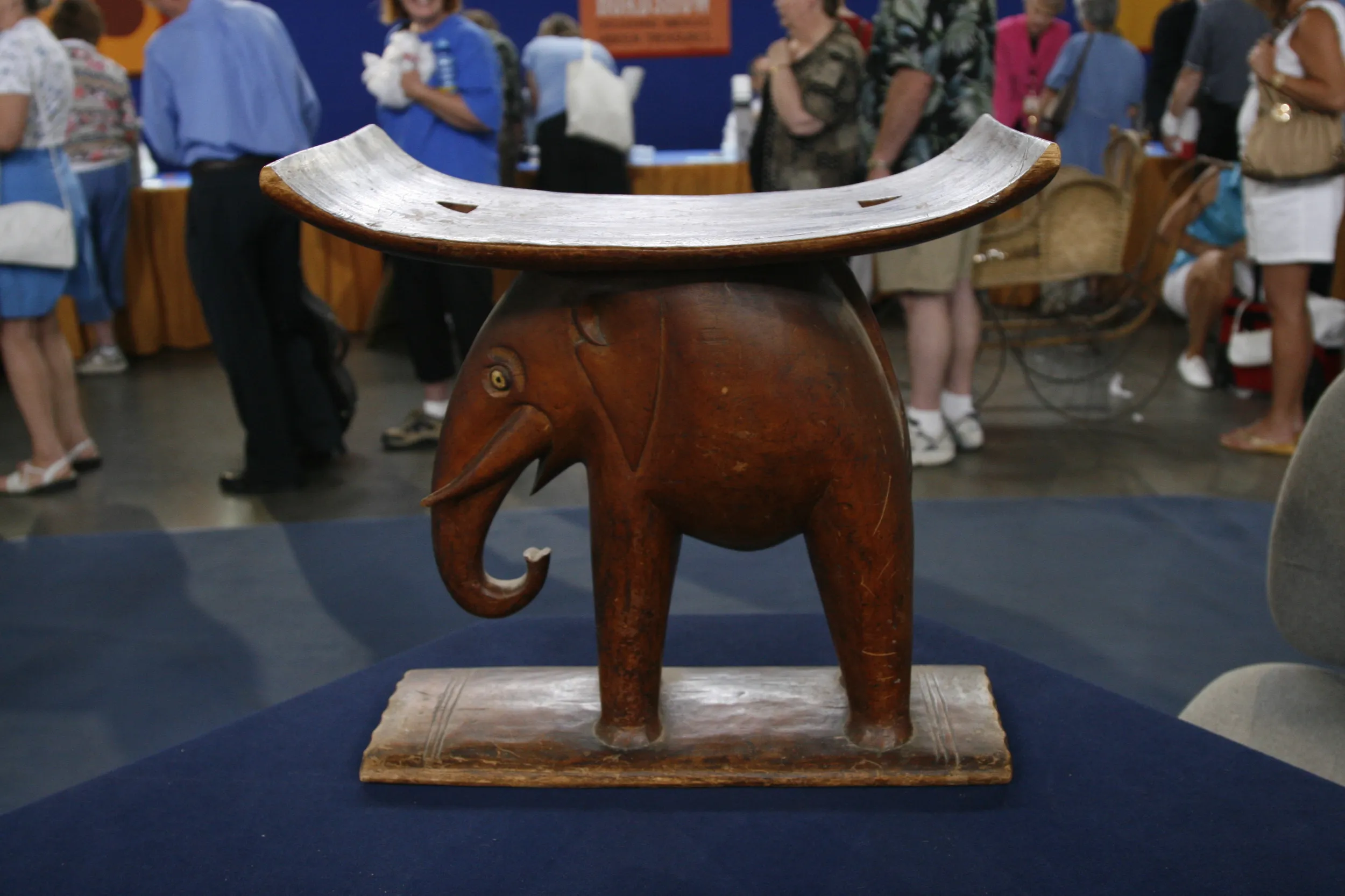GUEST: Well, my grandfather was in public office, and they were remodeling, and when they did so, they were gonna get rid of all the old furniture, so my grandfather asked, and this is him in the picture.
APPRAISER: That's your grandfather seated there?
GUEST: That's my grandfather right there.
APPRAISER: So he was an elected…
GUEST: He was. He--
APPRAISER: …City council member or something like that?
GUEST: At this time, I think he was city commissioner. He was also police commissioner. He was acting mayor part of the time, whatever.
APPRAISER: Really?
GUEST: But here's the picture. This guy's sitting in the chair, so he had it redone and he took it with him when he left public office.
APPRAISER: With permission, of course, right?
GUEST: With permission, with permission, yes.
APPRAISER: So this was the equivalent of his gold watch after public service.
GUEST: Yes, it was, exactly.
APPRAISER: I think it's totally cool, particularly because it's got a lot of local interest. It's the Omaha city mayor's chair.
GUEST: Right.
APPRAISER: Which we know, it's not just conjecture, it's an iron clad story because it's documented here in the photograph.
GUEST: And I have more photographs of it as well, but this one was actually published in a July issue of Life magazine.
APPRAISER: Right, and actually we figured it out, it says "Compliments" right here.
GUEST: Oh, okay.
APPRAISER: It says, "Compliments, Life magazine, July 1947."
GUEST: Yeah.
APPRAISER: It's such a cool thing because in the world of public furnishings and redecorating, a lot of things get discarded and lost to time. And in the world of office chairs, this is, like, the greatest thing…
GUEST: Wow.
APPRAISER: …That's ever shown up. I mean, it is so elaborate. This is really a happening chair. We would describe it in art historical terms as being a Renaissance Revival, a carved oak Renaissance Revival office chair. You've got these lion's head griffins that create the arm supports. Some of the other things that one sees in the Renaissance are carved elements that show up here in the sides in the arm supports. This big scroll that's accentuated with the quatrefoil or that big floral element in the middle, and the scrolls here at the back of the stiles. So it really has a lot going on. The carving continues onto the back, which is terrific. This really shows a full expression of the Renaissance Revival. It dates to probably about 1880, and I suspect it was made between Chicago and Pittsburgh or Buffalo. That Great Lakes region was a big manufacturing hub of furniture, which was then put onto trains and dispersed around the country. From a condition standpoint, the chair itself is in remarkable shape. It has been reupholstered, and in the world of what you can and cannot do, changing the upholstery is like changing the tires on your car.
GUEST: Oh, so that wasn't a bad thing.
APPRAISER: It's not a big deal. I would say this chair, in today's auction estimates, we're looking at something that's $3,000 to $5,000.
GUEST: Wow. Well, to us, it's just a great family... thank you.
APPRAISER: Great family heirloom.
GUEST: Yes. It's such a wonderful object.
GUEST: Thank you.

